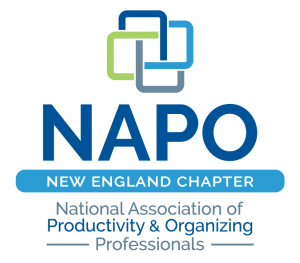We’ve all said it. Even me, but not anymore, and after reading this blog you won’t say it either. I’m referring to the phrase, “but I might need that someday“. It’s a phrase that gets spoken when we think something needs to be kept, despite the fact that it hasn’t been used in a very long time. For some unknown reason we’re fearful that as soon as we get rid of this item we’ll desperately need it. We refuse to get rid of kitchen gadgets that live in the darkest recesses of a corner cabinet. We insist on saving the rarely used tools that are buried in the shed. We fantasize about using fancy linens that are still in their original packaging that has yellowed with age. We all own things that lay dormant in our homes, never being used or useful. So why do we hold onto them?
We hold onto them because we think they’re useful. BUT are they? What if someday comes and you can’t find it. It’s not where you thought it was. Will you waste valuable time looking for it? Will you go out and buy a new one? If so, you’ve not only wasted time, but money as well. What if someday comes and it’s not in the condition you thought it was in? Is it easier to make do without it or find an alternative solution? What if someday comes and you can’t get at it because it’s buried under a pile of clutter? How much time will you spend retrieving it? What if someday never comes?
Items are useful only if we can find them when we need them and they’re in good operating condition. It takes time and effort to organize and maintain our belongings. Why waste time and effort on items that haven’t been used in a very long time or at all? A guideline that I find helpful relates to how easy it is to replace an item and how costly it is to replace an item. If an item can be replaced in 20 minutes for under $20.00 then get rid of it. Instead of saying “I might need that someday!” please consider letting the item go.
The next time that phrase is on the tip of your tongue ask yourself these questions.
- When is someday? Are you willing to put a note on the item that says if not used within 3 years from today (date) then get rid of it?
- Will you be able to find it and will it be in good working order when someday comes? If no, let it go.
- Is there someone who can use and appreciate it now instead of waiting for someday? If yes, than give it to them.
- How much space is it taking up? Can that space be better used for something else? If yes, than free up that space.
- Can it be replaced in 20 minutes for under $20.00? If yes, than let it go.
©October 2019 Janine Cavanaugh, Certified Professional Organzier® All Rights Reserved



 When
When 




Follow Me